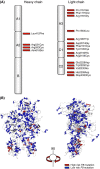Hemophilia management: Huge impact of a tiny difference
- PMID: 32211572
- PMCID: PMC7086468
- DOI: 10.1002/rth2.12314
Hemophilia management: Huge impact of a tiny difference
Abstract
Hemophilia A and B are inherited X-linked disorders of hemostasis, associated with an increased bleeding tendency. Patients with severe hemophilia have undetectable clotting factor levels and experience spontaneous bleeds. In patients with nonsevere hemophilia, the clotting factor levels are 2% to 40% of normal and bleeds predominantly occur after provocative events such as trauma and surgery. Despite this milder phenotype, patients with nonsevere hemophilia may suffer from considerable morbidity and have an increased mortality risk. However, many aspects of the course of disease and treatment remain unclear. Information on the factors influencing interindividual differences in bleeding phenotype is lacking, and misdiagnosis may occur due to assay discrepancies in the diagnostic workup. Desmopressin is the preferred treatment modality, but some patients and indications require treatment with clotting factor concentrates. This may elicit inhibitor formation, which is associated with an increased burden of disease and a higher mortality rate. It has been found that patients with nonsevere hemophilia A carry a lifelong risk for this serious complication. In this review, we provide an overview of the current knowledge of the diagnosis and management of nonsevere hemophilia. A report of science presented at the International Society on Thrombosis and Haemostasis 2019 Annual Congress is also provided.
Keywords: diagnosis; hemophilia A; hemophilia B; phenotype; treatment.
© 2020 The Authors. Research and Practice in Thrombosis and Haemostasis published by Wiley Periodicals, Inc on behalf of International Society on Thrombosis and Haemostasis.
Figures



References
-
- Fijnvandraat K, Cnossen MH, Leebeek FW, Peters M. Diagnosis and management of haemophilia. BMJ (Clinical Research Ed). 2012;344:e2707. - PubMed
-
- White GC 2nd, Rosendaal F, Aledort LM, Lusher JM, Rothschild C. Ingerslev J. Definitions in hemophilia. Thromb Haemost. 2001;85:560. - PubMed
-
- Iorio A, Stonebraker JS, Chambost H, Makris M, Coffin D, Herr C, et al. Establishing the prevalence and prevalence at birth of hemophilia in males: a meta‐analytic approach using national registries. Ann Intern Med. 2019;171(8):540. - PubMed
-
- World Federation of Hemophilia . World Federation of Hemophilia Annual Global Survey 2017, Interactive Graphs.
-
- Personal calculations from data on mild hemophilia from the World Federation of Hemophilia Annual Global Surveys 2010–2017. The most recent registration numbers per country were used. [Accessed 2019 October 20] Available from https://www1.wfh.org/GlobalSurvey/Public_AGS/AGS_Patients_Severity_EN.aspx
LinkOut - more resources
Full Text Sources

